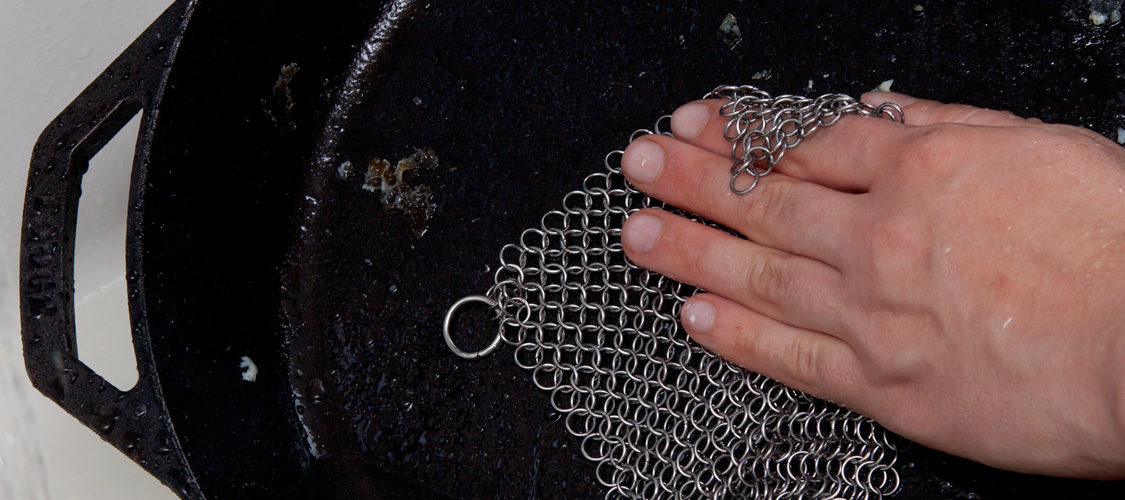Cast iron has been a favorite cookware of many good cooks from grandmothers to famous chefs for hundreds of years. It diffuses heat evenly and is able to withstand very high temperatures. New cast iron needs to be seasoned with bacon grease, lard or vegetable shortening to protect it from rust and make it one of the best non-stick kitchen utensils available. Modern non-stick pans have cleaning instructions that come with them from the manufacturer but cast iron has no such thing. There are many different ideas about what is the best way to clean it including don’t clean it at all.
A cast iron skillet can be used for many different types of cooking from deep frying to baking. The more it is used, especially with fatty foods, the harder the seasoning becomes and if the seasoning is not removed through cleaning, it serves as a non-stick surface. Ordinary cleaning methods such as in a dishwasher or scouring with detergent will damage the seasoning and a thin layer of vegetable oil or animal fat will need to be reapplied to a hot pan.
Since the baked on oil may become rancid it is recommended to clean the skillet gently after use. One possibility is to use hot water and scrub the skillet with a stiff brush. Family traditions state never to use soap on a cast iron skillet but this is mainly because the old fashioned lye soap would remove the seasoning. Most seasoning can withstand mild soapy water with today’s dish soap and a gentle brief rub. If there is any concern, just reapply the oil after drying the skillet. In parts of Asia, including India, cast iron is cleaned with coarse salt and a clean cloth. This removes excess fat and forestalls the remaining seasoning from turning rancid.
Avoid Scratching the Seasoning
For normal everyday cleaning be sure to use a soft sponge, cloth or paper towel and not any sharp or abrasive cleaning material including wire brushes, pads with metal particles imbedded, plastic or metal scouring pads as they can scrape off the seasoning.
Two Types of Cleaning
A cast iron skillet needs to be cleaned after use as already mentioned, so that rancid oils don’t collect and get into the next food prepared in the pan. Cleaning pans that have not been used for years and are rusted or encrusted with old food need a different kind of cleaning. The skillet needs to be cleaned so it is bare metal again and reseasoned for use. There are several ways to clean a skillet to the metal:
- Put it in a self cleaning oven if the oven allows the racks to remain for the process
- Spray with oven cleaner and put in a plastic bag and seal it for a day or two. Take it out and scrub it with a brass brush.
- Soak in one and a half gallons of water and one can of lye for five days, remove and scrub with the brass brush.
- Rust can be removed by soaking in a 50% solution of white vinegar and water for 2 or 3 hours.
- In very tough cases a variable-speed drill that can be fitted with a wire brush attachment can be used to clean and smooth out serious rust spots.
- Make sure to wash the skillet well with soap and plain water several times to remove any toxic chemicals that may have been used in the cleaning.
After this type of strong cleaning the pan is ready to be seasoned again and used. Never store it wet as it can rust. Put one or two paper towels in the dry pan to absorb any moisture in the air.
Additional Resources: Real Simple, Love To Know



